By Br. Steve Herro, O. Praem.

I was mulling over the world refugee crisis before Pope Francis boldly preached his Midnight Mass homily on Christmas Eve (I was not the only one impressed by his words connecting the Holy Family to today’s refugee families; so were my Catholic, Lutheran, and Unitarian friends on Facebook). Pope Francis preached, in part:
So many other footsteps are hidden in the footsteps of Joseph and Mary. We see the tracks of entire families forced to set out in our own day. We see the tracks of millions of persons who do not choose to go away but, driven from their land, leave behind their dear ones. In many cases this departure is filled with hope, hope for the future; yet for many others this departure can only have one name: survival. Surviving the Herods of today, who, to impose their power and increase their wealth, see no problem in shedding innocent blood.
“Another Year of Record Displacement” (Council on Foreign Relations, December 22, 2017) reported, in part:
Those with the greatest resources exercise the greatest responsibility. At the moment, there is a vacuum of leadership on the refugee question. … But in the main, the wealthiest countries in the world, led by the United States, are turning their backs on the problem, and that is very dangerous.
Though I live in the midst of the U.S. heartland, in a rather frigid and less culturally diverse section of the country, I am reminded of the extent of the refugee crisis in our Church and world. Three Somali leaders presented at our Bay Area Community Council meeting last month. We were surprised when we learned that 5,000 Somalis live in our community—about 2.5 percent of the population of our metro area. After several months of planning and one postponement, I am glad that I did not give up in attempting to arrange the Somalis’ presentation. I shared our positive experience with a local pastor. He replied that one of his congregants was producing a plan to ensure that every liturgy would have armed personnel to protect the churchgoers from an armed attack by Somalis, as one church in the Twin Cities has done. “Ugh,” I thought to myself. We have a long way to go.

2018 will be a very challenging year for the Church’s priority to “welcome the stranger.”
- The security of 800,000 immigrant young people is threatened by a March deadline for Congress to regularize their status.
- The president has cut the ceiling on refugees to be admitted to our country from 100,000 to 45,000 people.
- Salvadorans, Haitans, and Nicaraguans given temporary permission to live in the U.S. following natural disasters in their countries have been told (or may be told in the very near future) that their welcome is over.
Our Church’s National Migration Week (January 7-13, 2018) resource toolkit offers some suggestions on how we can begin to change the tenor in our communities in an attempt to foster real communities of “encounter” with “the other.”

